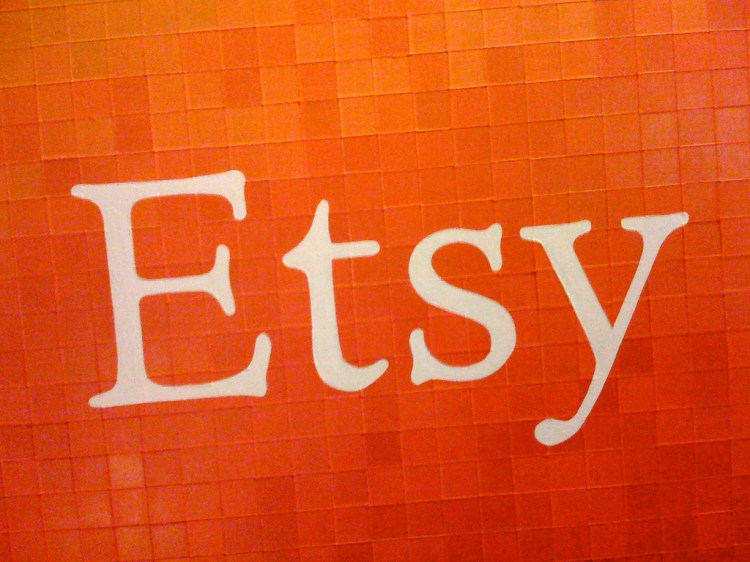Home to lacy vintage wedding dresses and handmade leather tote bags, quirky e-commerce shop Etsy is headed for the big-time with a $100 million IPO in the works. But is it ready for Wall Street?
Let’s take a quick walk down memory lane to see how Etsy has grown over the nearly 10 years it’s been in business.
Back in 2005, in a Brooklyn apartment, Rob Kalin, Chris Maguire, and Haim Schoppik created a company that would give the makers of the world an online platform to sell their goods.
https://www.youtube.com/watch?v=fspJrc6Uwfk
Two years later in 2007, Etsy had nearly 450,000 registered sellers generating $26 million in annual sales. That same year, the company took in over $3 million in venture funding.
While Etsy was growing, dissatisfaction lurked in the company’s executive ranks, according to a 2011 profile of Kalin in Inc. Magazine. Kalin, a maker himself, had developed a reputation amongst his colleagues for being more of a dreamer than an executer. Frustrated with the number of hours they were putting in, Maguire and Schoppik left the company in August of 2008.
What should have been a dire moment for Etsy manifested as a key turning point. Deeply in need of leadership, Kalin hired Chad Dickerson, senior director of product at Yahoo. Dickerson was brought on as Etsy’s chief technology officer and ultimately its saving grace. The exec took to the role quickly and built out Etsy’s engineering team.
Dickerson proved so effective that three years after he was hired as CTO, he made the leap into the role of CEO, replacing Kalin. This had not been Kalin’s first step away from the company. In 2008, he also removed himself from day-to-day operations for a time. However, this time, Kalin would not be making a return. The executive shuffle marked a major change for the Etsy, both in its company culture and its corporate goals.
Two years after Dickerson’s appointment, the company made a shift away from its roots in grassroots idealism and toward making the company more financial viable. In 2013, Etsy tweaked its Terms of Service so that sellers were allowed to sell manufactured goods as well as handmade items. For a company that had been built around craftsmanship and supporting small businesses, this was a stark shift. As a result some die-hard makers wanted to leave the site. But many found they couldn’t, because of the earning potential Etsy afforded them. Simply put, sellers couldn’t make as much money on a personal website as they could on Etsy. So while there was certainly some outcry from the community, there wasn’t a measurable loss in the number of sellers on Etsy’s site. Today the company boasts 54 million members.
Not only did the change to its TOS not negatively impact the company, it may have actually helped it grow. Taking a look at Etsy sales from 2008 to 2014, you’ll see the company has been steadily growing year after year. But in 2013, sales grew from $895 million to $1.34 billion, according to Statista.
And the company has continued to grow at a rapid clip. In 2014, Etsy generated $195.6 million in revenue, eclipsing 2013 figures. Etsy says its gross merchandise sales hit $1.93 billion in 2014, up 43 percent from the year prior.
Beyond cultivating sales, Dickerson was also making other key moves, including a strategic hire that garnered the company some notice. In July of 2014, Etsy brought on Mike Grishaver as its senior vice president of product. The company poached Grishaver from music streaming service Pandora where he served the same role. Grishaver had spent a lot of time developing Pandora’s mobile user experience, and with consumers increasingly shopping on their phones, Etsy knew it needed to put heavy resources into mobile. Since then, Etsy has put out a mobile app for sellers that allows them to make in-person sales as well as update their site listing from their phone.
And now, the company is going public, which some gripe is at odds with Etsy’s self-proclaimed role as a champion of small businesses.
But despite Etsy’s moves to make itself more corporate and less like a band of makers, the company has maintained some of its original ethos. For instance, Etsy is a B-Corp, meaning it holds itself to a stringent set of environmental and social standards. The company also boasts much better employment statistics than most of Silicon Valley. For instance 51 percent of Etsy staffers are female, and one-third of both its leadership and tech teams are made up of women. By comparison, only 15 percent of Facebook’s technical workers are female.
As an aside, it’s worth noting that Etsy is not very ethnically diverse with 79 percent of its staff identifying as white.
Though these sorts of stats may play well with Etsy’s community, Wall Street may see the company as a bunch of hipsters. Likewise, when the company announced its public offering yesterday, Twitter was awash in snide remarks about Etsy as the kind of company that might be parodied on Portlandia.
Etsy listing is peak hipster. Hipster goods institutionalised. Let the beard shaving commence. http://t.co/WauAjmcZRR
— Sasha Naryshkine (@SashaNaryshkine) March 5, 2015
But, Etsy’s business savvy may put those feelings at ease as the company edges closer to its public offering.
To date, Etsy has raised $97.3 million in venture funding.


